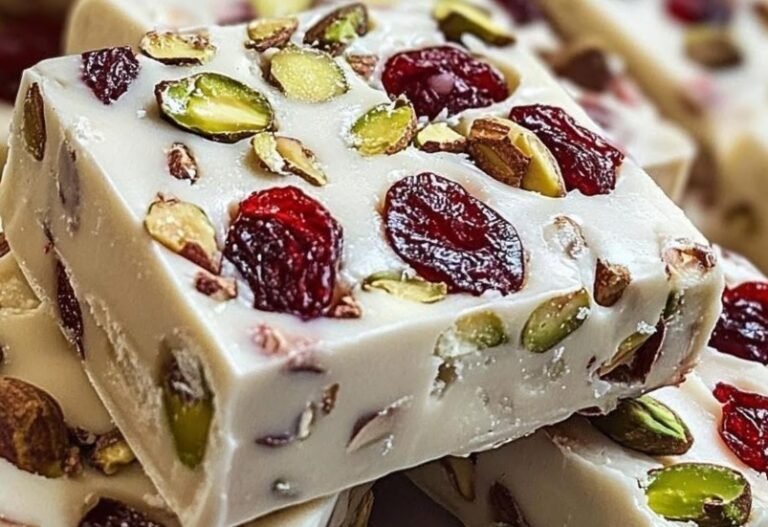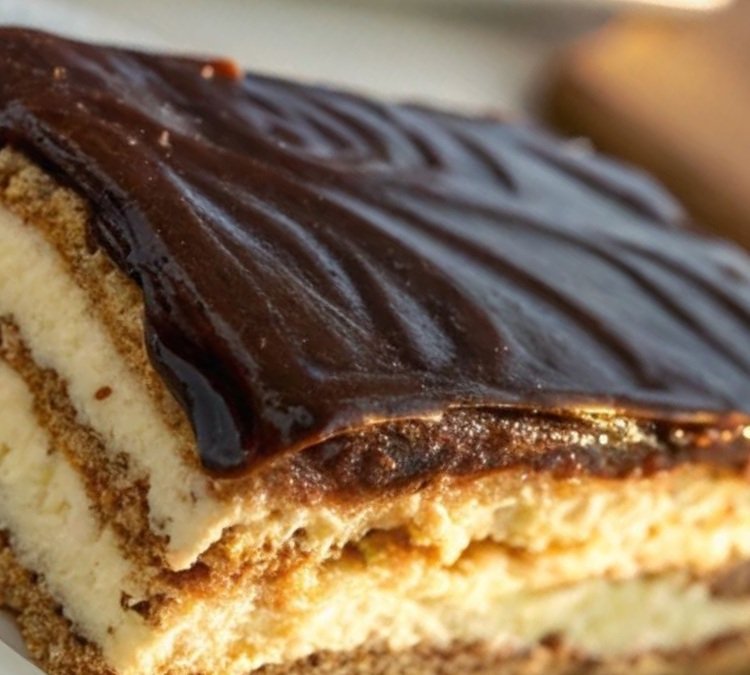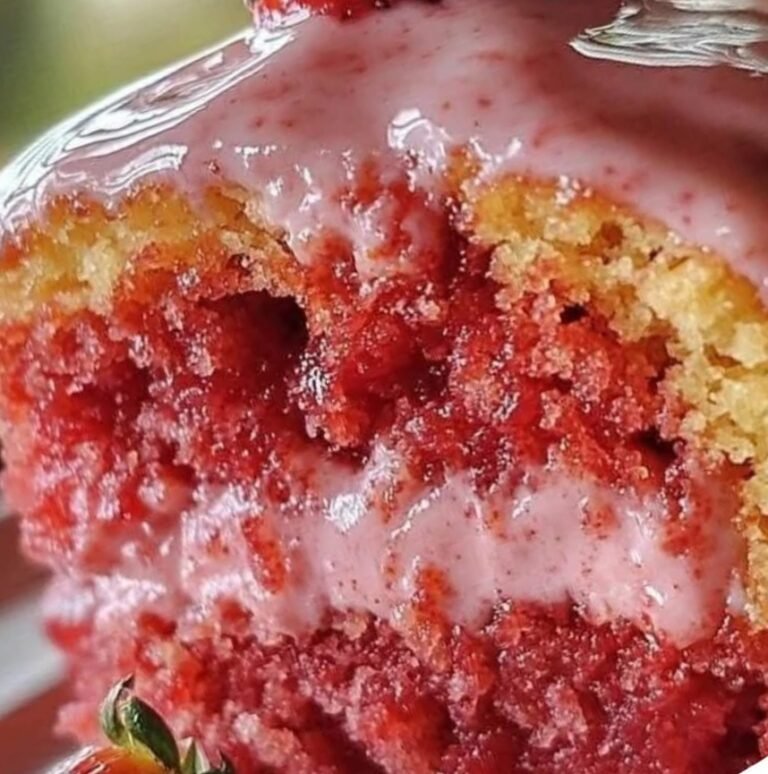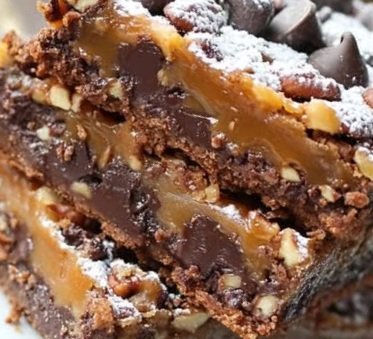Classic Bread and Butter Pudding: A Warm, Comforting Dessert
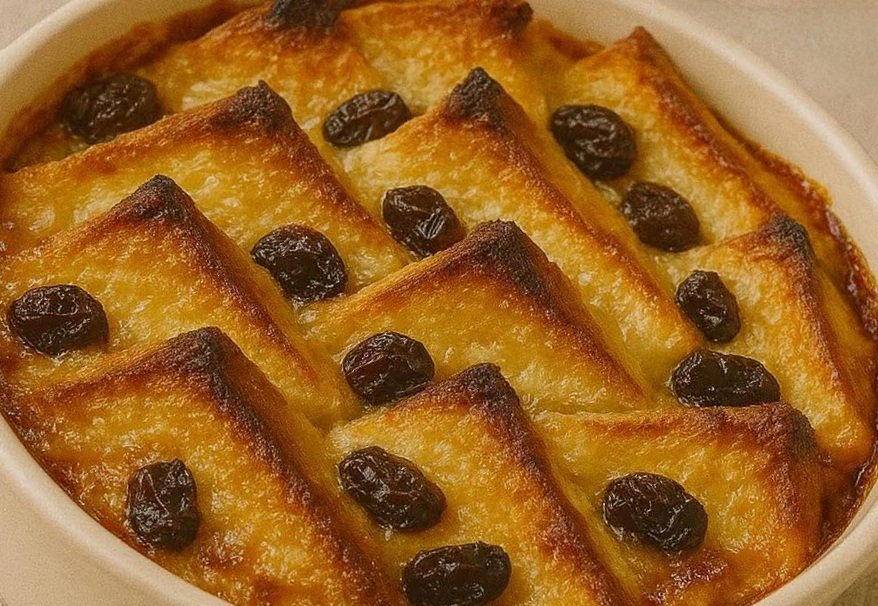
There’s something undeniably nostalgic and heartwarming about a Classic Bread and Butter Pudding, a traditional dessert that turns simple ingredients into a golden, custardy delight. This recipe features buttery bread layered with sweet raisins, soaked in a rich egg and milk custard, and baked to perfection with a caramelized top. Perfect for a cozy family dinner or a delightful end to a meal featuring savory dishes like your Cheesy Chicken Crescent Bites or Creamy Boursin Garlic Herb Chicken Skillet, this dessert is both easy to make and irresistibly delicious. With its warm spices and tender texture, it’s a timeless treat that’s sure to please. Let’s explore how to create this comforting classic!
Ingredients (Serves 6)
- 6 slices of white bread, buttered – Use slightly stale bread for best results; brioche or challah adds extra richness.
- Handful of raisins – About 1/4 cup, or substitute with sultanas, cranberries, or chopped dried apricots.
- 3 large eggs – For a creamy custard base.
- 500ml milk – Whole milk enhances flavor, but 2% works too.
- 50g granulated sugar – Adjust to taste for a sweeter or subtler pudding.
- 1 tsp vanilla extract – Pure vanilla adds depth; a pinch of vanilla bean paste works wonderfully too.
- Optional: 1/2 tsp ground cinnamon or nutmeg – For a warm, spiced twist.
Equipment Needed
- Medium baking dish (about 8×8 inches or similar)
- Mixing bowl
- Whisk
- Measuring cups and spoons
- Knife and cutting board
- Oven
Preparation Instructions
- Prepare the Bread Layers
Preheat your oven to 180°C (350°F). Lightly grease your baking dish with butter to prevent sticking. Cut the buttered bread slices diagonally into triangles. Arrange half of the slices in the dish, slightly overlapping, and sprinkle half of the raisins evenly over the top. Add the remaining bread slices in a second layer, overlapping as needed, and scatter the rest of the raisins. The diagonal cuts create an appealing pattern, reminiscent of the pudding in the image. - Make the Custard
In a mixing bowl, whisk together the eggs, milk, sugar, and vanilla extract until fully combined and the sugar dissolves. For an extra layer of flavor, add a pinch of cinnamon or nutmeg if desired. The custard should be smooth and pale yellow, with no streaks of egg white. - Soak the Bread
Slowly pour the custard mixture evenly over the bread layers, ensuring all pieces are soaked. Gently press down on the bread with a spoon to help it absorb the liquid. Let the dish sit for 10 minutes to allow the bread to soak up the custard fully. This step is key to achieving a tender, moist pudding. - Bake to Perfection
Place the baking dish in the preheated oven and bake for 30–40 minutes. The top should turn golden brown, with the edges slightly crisp and the custard set but still creamy in the center. Check at 30 minutes—if it’s not golden enough, bake for an additional 5–10 minutes. A knife inserted in the center should come out clean when done. - Serve Warm
Remove the pudding from the oven and let it cool for 5–10 minutes to set. Serve warm, straight from the dish, with a dusting of powdered sugar or a dollop of whipped cream if desired. Pair with a warm beverage like tea or coffee for the ultimate comfort experience.
Prep and Cook Details
- Prep Time: 15 minutes
- Cook Time: 30–40 minutes
- Total Time: 45–55 minutes
- Calories: Approximately 250 kcal per serving
- Servings: 6
Serving Suggestions
This bread and butter pudding is a versatile dessert that complements a variety of occasions:
- After Savory Meals: Follow your Cheesy Smoked Sausage or Boursin Chicken Skillet with this sweet treat for a balanced dinner.
- Family Dessert: Serve with vanilla ice cream or custard for a decadent family night.
- Brunch Option: Pair with fresh fruit and a drizzle of maple syrup for a morning twist.
- Holiday Treat: Add a splash of rum or brandy to the custard for a festive touch.
Customization Ideas
- Fruit Variations: Swap raisins for blueberries, apples, or cherries for a different flavor profile.
- Spice It Up: Add a pinch of allspice or cardamom alongside cinnamon for a unique twist.
- Rich Upgrade: Spread a thin layer of marmalade or jam on the bread before layering for extra sweetness.
- Nutty Addition: Sprinkle chopped almonds or pecans between layers for crunch.
Storage and Reheating
- Refrigeration: Store leftovers in an airtight container in the fridge for up to 2 days.
- Freezing: Freeze individual portions in freezer-safe containers for up to 1 month. Thaw overnight in the fridge before reheating.
- Reheating: Warm in the oven at 160°C (320°F) for 10–15 minutes or microwave in 30-second intervals until heated through. Add a splash of milk if it dries out.
Why This Recipe Shines
This bread and butter pudding is a celebration of simplicity and comfort. The buttery bread soaks up the creamy custard, while the raisins add bursts of sweetness and texture. It’s an economical way to use up leftover bread, making it a sustainable choice, and its versatility allows for endless personalization. Perfect for pairing with the savory dishes on your site, it rounds out a menu with a sweet, satisfying finish.
Pro Tips for Success
- Stale Bread Works Best: Day-old bread absorbs custard better without becoming mushy.
- Even Soaking: Press the bread gently after pouring the custard to ensure even saturation.
- Check Doneness: The center should jiggle slightly when done; it will firm up as it cools.
Pairing Ideas
- Drinks: Enjoy with a cup of Earl Grey tea, hot chocolate, or a dessert wine like Sauternes.
- Sides: Serve with a scoop of vanilla ice cream, a spoonful of crème fraîche, or fresh berries.
Connecting to Your Recipe Collection
This dessert fits beautifully with your savory lineup. Imagine starting with Cheesy Chicken Crescent Bites as an appetizer, moving to Creamy Boursin Garlic Herb Chicken Skillet as the main course, and finishing with this bread pudding for a complete, comforting meal plan. It’s a natural progression from cheesy appetizers to a rich entrée to a sweet finale.
